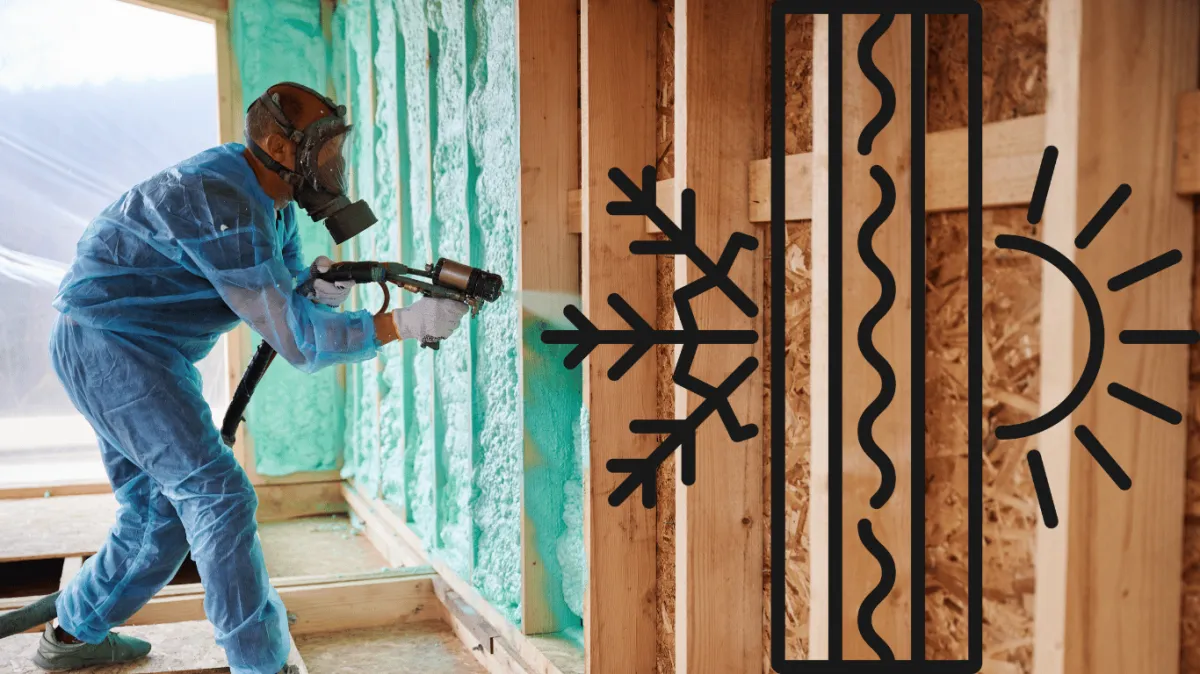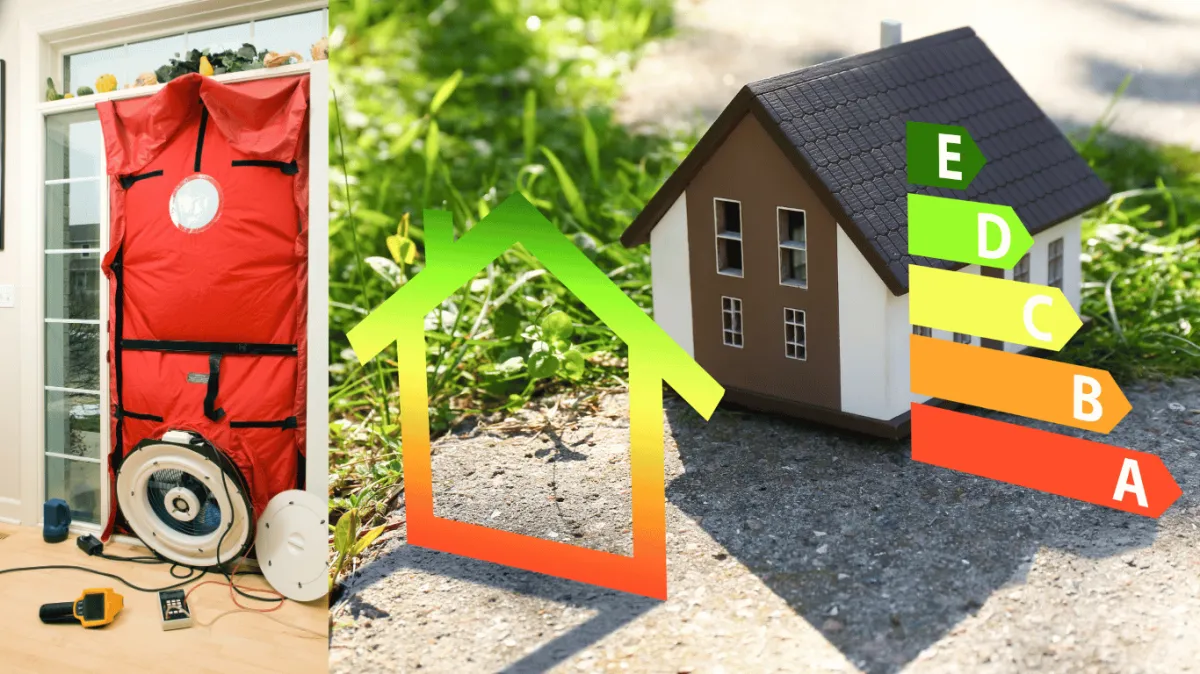Improving Your
Energy Efficiency
Home Diagnostic Solutions is a foam and fiberglass insulation installation company for residential and commercial properties measured by energy efficiency testing.
ABOUT US
At Home Diagnostic Solutions, we’re committed to creating comfortable, efficient, and sustainable indoor environments for homeowners and businesses alike. From thorough energy audits to expert insulation services, our certified team provides the insights and solutions you need to reduce costs, increase comfort, and protect your investment for years to come.
SERVICES
What We Offer For You
Energy Audit
Our Energy Audit is the first step toward understanding your home’s energy use. We perform audits for existing homes and for clients looking to assess energy efficiency before buying a property. Each audit involves blower door testing to identify insulation gaps and potential moisture issues. During the process, we’ll pinpoint areas of concern and recommend strategies for improvement. By addressing these deficiencies, you can lower energy costs, increase comfort, and reduce your carbon footprint.


Foam & Fiberglass Insulation
Proper insulation is essential for maintaining comfortable temperatures and reducing energy costs in both residential and commercial properties. Our team specializes in installing foam and fiberglass insulation, starting with a thorough assessment of your building’s needs. Whether it’s an attic, basement, or exterior walls, we ensure each space is sealed to minimize air leakage and maximize thermal performance.
Foam insulation expands to fill gaps and crevices, forming a durable barrier that prevents drafts while maintaining consistent indoor temperatures. Fiberglass insulation remains a budget-friendly option with proven effectiveness in slowing heat transfer. Both methods help you lower utility bills, reduce environmental impact, and improve overall indoor comfort. We handle every project with precision and care, so you can enjoy reliable insulation for years to come.
Blower Door Test
A blower door test measures how airtight your home is. We place a high-speed fan in an exterior door, creating negative pressure that draws air through openings and gaps. Our BPI-certified experts then calculate how many times the air in your home is replaced per hour—an important indicator of overall energy performance. The results help you pinpoint where energy is being lost so you can make targeted improvements.


Duct Blaster Test
Duct leakage can undermine HVAC performance and drive up utility bills. In a Duct Blaster Test, we seal off supply and return vents, attach a specialized fan to one vent, and pressurize the system. Air escaping through leaks in the ductwork reveals areas needing attention. Properly sealed ducts ensure heating and cooling reach intended rooms, improving comfort and efficiency while helping you save on energy costs.
FAQS
What is the difference between Closed-Cell and Open-Cell spray Polyurethane foam insulation?
Closed-Cell Foam
Closed-cell spray Polyurethane foam is highly dense and, when sprayed, expands up to 30 times its original size, producing an R-value per inch of 6.3. In Closed-Cell spray foam, cells or bubbles are compacted together but not broken, and each is filled with an inert gas selected to maximize the insulation value. An example of Closed-Cell foam insulation that we benefit from every day is the insulation found in our refrigerators and freezers.
The advantages of Closed-Cell foam include its strength, higher R-value, and greater resistance to the leakage of air or water vapor, making it ideal for windy, damp, and water-prone locations, such as coastal areas, below grade, crawlspaces, or for the whole house. For many of our clients, Closed-Cell foam is the product of choice. While more expensive than Open-Cell foam because of its density, at the 1-inch thickness, Closed-Cell foam develops the all-important air barrier and at 2″ moisture barrier. Closed-Cell Spray Foam is the only FEMA approved flood resistant insulation material.
Open-Cell Foam
Open-Cell Spray Polyurethane foam is soft – like a foam cushion in a pillow and is an excellent air and sound insulator. Unlike Closed-Cell foam, Open-Cell foam is less dense, with each Cell in the foam being broken, thus allowing air to fill all of the spaces in the material. Upon spraying, Open-Cell foam expands up to 150 times its original size, thereby filling all nooks and crannies in the wall cavity. When spraying is complete, the excess foam is shaved off the studs, leaving a flat surface over which drywall or other material can be applied. With an R-value of 3.9 per inch, Open-Cell foam gives you an air barrier @ 4.5″ inches of thickness. Uses for Open-Cell include spraying directly to all walls of a house, and as soundproofing for media rooms. Open-Cell foam may also be directly sprayed to roof decks.
If you spray the underside of a roof deck with spray Polyurethane foam insulation, should you vent the attic?
No, applying spray Polyurethane foam insulation to the underside of the roof deck eliminates the need to vent the attic. Venting of attics primarily came about as a way to eliminate condensation buildup on attic insulation resulting from temperature differences between the inside attic walls and the interior of the building. Unfortunately, this venting also allows cold air into the attic in the winter and warm air in the summer. With Spray Polyurethane foam insulation, a thermal and moisture gradient is provided, allowing the space to become semi-conditioned within 5-10 degrees of the interior house temperature, thus preventing the development of dew point conditions in the attic.
Won't sealing my house lead to indoor air quality problems?
If you are sealing the entire building envelope, we always recommend some form of fresh air ventilation. Most building design professionals will advise you to seal the building structure as tight as possible and provide the necessary ventilation through an air exchanger attached to your heating and air conditioning system. In the winter, this simple machine brings cold, fresh air from the outside and passes it by, the warm, stale air being expelled. This allows the fresh air to pick up the heat from the stale air, maintaining energy efficiency while providing a continuous supply of fresh air. In the summer, the opposite occurs, giving the same results. In this manner, you can build a highly energy-efficient exterior shell using spray Polyurethane foam insulation while still providing controlled and energy-efficient ventilation.
Suppose you are retrofitting parts of your home, such as the attic, crawlspace, or basement walls. In that case, you will probably not need to worry about your house being sealed too tightly as air enters the building envelope every time you open the door, as well as through windows and locations within the home that typically are not reachable because of drywall, etc.
Our position regarding insulating a new home is that you will get only one chance to do the whole house. If you under-insulate, you will regret it. In the unlikely event that you over-insulate, the situation can be remedied with low-cost ventilation systems, as previously mentioned.
Can I use spray Polyurethane foam to insulate an existing home?
Yes. We would foam insulation on the underside of your roof deck, under crawl spaces, on basement walls, and into new additions or home renovation projects involving the removal of the existing drywall.
How does Spray Polyurethane foam insulation compare with Fiberglass and Cellulose?
While typically 3-4 times more expensive than Fiberglass and blown-in Cellulose, spray Polyurethane foam insulation benefits allow it to provide a quick return on investment for the homeowner that continues indefinitely. Fiberglass in blown-in form, batts, and rolls is not an air barrier and will not stop air leakage. Blown-in cellulose will slow air leakage but is also not truly an air barrier. Spray Polyurethane foam insulation will stop air leakage when sprayed to recommended thicknesses. Both fiberglass and blown-in cellulose have significantly lower R-values per inch of thickness than spray Polyurethane foam insulation. Fiberglass and Cellulose can sag, settle, and shift over time, leaving sections in the wall cavity and attic un-insulated or under-insulated. Spray Polyurethane foam insulation will completely adhere to the wood substrate and sheathing and is rigid; the result is a permanent barrier to heat loss and air entry that strengthens the structure. Fiberglass products and blown-in cellulose will do neither.
Will I save money if I insulate with Spray Polyurethane foam insulation?
Yes! The installed cost of spray Polyurethane foam insulation is higher than Fiberglass and blown-in Cellulose. However, the higher initial cost is partially offset because of the sustainability of the insulation (it will not degrade over time like fiberglass and cellulose), and you may be able to downsize your heating and air conditioning equipment. Additionally, you will save on your heating and cooling bills. Studies suggest that homes insulated with spray Polyurethane foam use up to 30 % less energy than homes insulated with conventional insulation. Your savings may be more significant or less depending on your lifestyle, appliances, house site, number and size of windows, etc.
Will I smell the spray Polyurethane foam insulation in my home?
There will be a slight odor initially. However, the insulation is usually odorless within 24-48 hours.
Is Spray Polyurethane foam insulation toxic?
No. Spray Polyurethane foam is NOT toxic. Usually, within 24-48 hours of application, and with proper ventilation, hazardous fumes are absent from the building.
How long does Spray Polyurethane foam insulation last?
Indefinitely. As an inert, long-lasting polymer, any residential or commercial structure using spray Polyurethane foam insulation will retain its ability to reduce heat and cooling loss for years to come.

